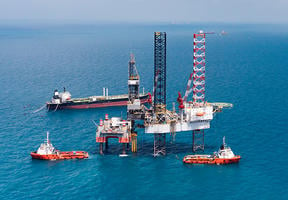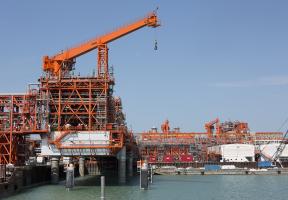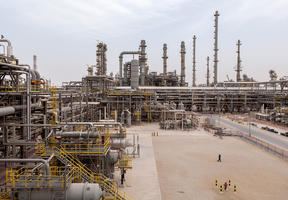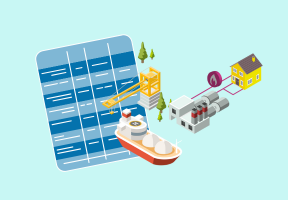The Role of Energy in Power Struggles Around the World
10 min read

Alain Beltran
Energy, the Sinews of War?
The start of the industrial age put energy at the heart of global rivalries and conflicts. The question of who controlled
, oil and now gas resources was a defining issue throughout the 20th century – and still is today. Alain Beltran, research director at the French National Center for Scientific Research (CNRS), tells us about some of the biggest disputes over energy.
The Coal and Railway Age
The first major changes came at the beginning of the industrial age. They were visible as early as the American Civil War (1861-1865), when the North had coal and the South had cotton. Coal meant steel and steam engines, and by extension railways, which transported troops and supplies faster than previously possible. Coal also meant steamboats and even submarines to carry out blockades. This access to energy and heavy industry gave Abraham Lincoln’s Northern forces a strategic advantage. The Franco-Prussian War of 1870 and the Russo-Japanese War of 1904-1905 were also marked by the influence of industry and transportation.
The Advent of Oil
The First World War (1914-1918) heralded the start of a new era, the age of oil. As early as 1911, Winston Churchill had the Royal Navy replace coal propulsion with oil propulsion. The more concentrated and efficient fuel gave off a lighter colored smoke, making it less noticeable. All the innovations of the Great War, such as the first airplanes, the first tanks and the first flame throwers, were based on oil.
Oil supplies became a matter of prime importance as a result. British oil companies were active in Persia and the Middle East very early on, and the United States provided the Allies with massive deliveries. In December 1917, Georges Clemenceau sent an extraordinary telegram to U.S. President Woodrow Wilson, saying “Gasoline is as vital as blood in the coming battles.”
The Second World War
The Second World War (1939-1945) only increased the importance of oil. The Japanese attack on the U.S. Navy at Pearl Harbor came mere days after President Roosevelt blocked oil exports to Japan. One of the targets of Hitler’s offensive in Russia was Baku and its oil fields, while Rommel’s Afrika Korps focused on Egypt and Iraq.
Gasoline was so essential that its cost was no longer an object. After the Normandy landings, oil arrived from England through the Pluto pipeline before being trucked to the front lines. For every two liters that went out, only one came in, but everyone’s needs were met...
The Geopolitical Weapon
Starting in the 1970s, oil became a political weapon. Oil-producing countries in the Middle East imposed oil embargoes, driven more by a desire to influence public opinion in consumer countries than to hinder their armed forces. The United States also often worried about Europe’s dependence on Russian gas. But were oil and gas really that effective as geopolitical weapons? In the first case, neither the United States nor Israel bowed to the embargo in the end. And in the second case, it has become clear that while Europe may need to buy Russian gas, Russia also needs to sell it to prop up its economy...
Future Conflicts
Oil ad gas supplies are still essential today and will probably stay that way for a long time to come. However, there are some mitigating factors.
The swarms of planes and heavy tanks used in WWII have been replaced by infinitely more sophisticated, more efficient and more expensive vehicles and machines – but much fewer of them. Even soldiers’ kit now features so much advanced technology that such huge amounts of fuel and materials are no longer needed.
Moreover, the military is taking an interest in technologies such as solar , which can generate on site in the field without the need to convoy in fuel. Such logistical requirements are a weakness. At the height of its involvement in Afghanistan, the U.S. Joint Chiefs of Staff calculated that one U.S. marine was killed or wounded for every 50 supply convoys.
Alain Beltran holds a teaching qualification in history and a Ph.D. in arts. He is currently a research director at France’s National Center of Scientific Research (CNRS), working at Sorbonne IRICE, a mixed research unit specializing in identity, international relations and European civilizations. Since 2006, he has also chaired the Committee for the History of Electricity and Energy. Authored works include “Histoire(s) de l’EDF, comment se sont prises les décisions de 1946 à nos jours”, with J-F Picard and M. Bungener, (Dunod) and “La fée Électricité”, (“Découvertes Gallimard / Sciences et techniques” collection).

Alice Pannier
Technology at the center of Geopolitical Relations
Technologies from big data to quantum computing, artificial intelligence and next-generation drones are fueling power struggles between nations and large industrial companies. Alice Pannier, head of the Geopolitics of Technology program at the French Institute of International Relations (IFRI), talks us through the impact of these new technologies, which have added a further level of complexity to the major energy issues seen in the 20th century.
Geopolitics (derived from the ancient Greek word “ge”, meaning earth) is the study of the effects of geography in its broadest sense – both physical (i.e., the topography of the planet) and human (i.e., climate, demographics, natural resources and economic exchanges) – on international relations.
Mining and energy resources (coal, then oil and gas) have for centuries weighed heavily on geopolitical relations and wars. Over the last three or four decades, new digital information and communication technologies have taken military, economic and cultural practices by storm all over the world, introducing new potential conflicts into geopolitical relations.
New Types of Tech Conflicts
New technologies are at the center of three potential battlegrounds: military, economic and political.
From a military point of view, technologies make a difference on several levels – the most obvious being innovations in weaponry itself (such as combat drones, hypersonic missiles and underwater and space warfare), providing armed forces with an advantage. Methods for intelligence gathering and analysis have been revolutionized with the advent of satellites, surveillance drones, and artificial intelligence to inform decision-making. Most people are familiar with the impact that cyber-influence can have in already tense situations, with the use of false information or bots to sway public opinion. Lastly, digital technologies can be used in direct cyber-attacks on transportation, energy and power infrastructure.
Economically, countries can reap substantial rewards from their capacity to innovate in robotics or artificial intelligence, telecommunications infrastructures or the to ensure greater . These benefits increase what is sometimes called “soft power”: a set of economic or cultural means that governments may use to influence other countries in a non-coercive way to serve their own interests.
In terms of values, technology is not neutral. It produces political and social models that can lead to rifts and conflict. We know that China and Russia have a very strong hold on the development of digital technologies that, in the name of the collective interest, give them control over industrial chains and populations. In the West, with some differences between North America and Europe, the management of sensitive data very quickly leads to the question of civil liberties.
Technology and Resource Availability
These three levels of conflict are nothing new. During the Cold War (1945-1990), the U.S.S.R. and the United States were locked in a race for new nuclear weapons and the conquest of space, a competition between economic systems and between capitalist and communist models. So references to a new “cold war” between the United States and China have some heavy connotations.
Current tensions also echo the classic rivalry to control natural resources. The development of renewable energies and electric vehicles has prompted concerns about the availability of certain minerals and materials such as “rare earths”. The widespread use of semiconductors has raised the question of organizing production channels in the country of consumption, or in non-hostile countries. So it’s clear that the issue of “dependence”, which has deeply marked the history of oil and, more recently, gas, is still very much on leaders’ minds.
Lastly, even though technologies are at the center of military force, economic power and the influence of political models, they do not automatically ensure “victory” in future conflicts. The withdrawal of the United States from Afghanistan after 20 years of war against the Taliban is a poignant example.
Alice Pannier (@AlicePannier) is head of the Geopolitics of Technology program, launched at the French Institute of International Relations (IFRI) in October 2020. From 2017 to 2020, she was an assistant professor at John Hopkins University in Washington, D.C. A graduate of King’s College London, the Université Panthéon-Sorbonne and Sciences-Po Paris, she has also worked as a researcher at the Institut de Recherche Stratégique de l’Ecole Militaire (IRSEM). She is the author of Rivals in Arms: The Rise of UK-France Defence Relations in the Twenty-First Century (McGill-Queen’s University Press, October 2020) and co-author, with Olivier Schmitt, of French Defence Policy Since the End of the Cold War (Routledge, February 2021).




















